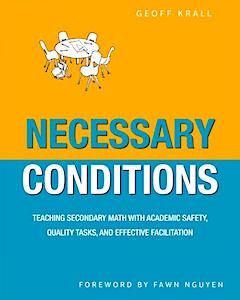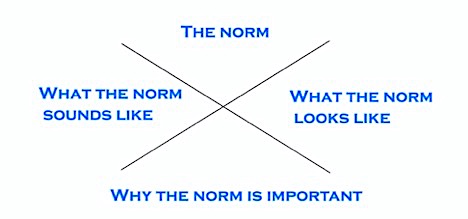Six Quick Tips for Effective Class Norms
Many teachers start off the year by establishing the norms they’d like their classrooms to exhibit. At the time of the year you’re reading this, you’ve probably identified the norms and behaviors that will make for an academically safe and productive learning environment.
However, the norms we post on the wall and share with our students are not always the norms that exist day to day. If a teacher has a desired norm that states “speed is not important for understanding” and yet you still have a hard stop-time for their tests, that particular norm isn’t true for your class.
Likewise, if a desired norm is “respect one another” and students aren’t demonstrating kindness through their actions and words, that norm is empty and non-existent.
It’s not enough to establish the norms; we have to teach them as well. Here are a few strategies for teaching and reflecting on norms in ways that really support student learning.
Developing a common understanding of norms. It’s not enough to merely state a desired norm. Students and teacher need to come to a common understanding of what the norm is, why it’s important, what it looks like in action, and what it sounds like. In groups or as a class brainstorm each norm, using this visual tool:
Norm Monitoring. While students are working, document evidence of students displaying the desired norms. This can be done using a slide or a document camera. After the lesson or work time, share your visual evidence and open up a conversation as to which norms the class embodied well that day and what norm(s) need to be an area of focus for tomorrow.
Assign a norm manager as a role in groupwork. Group roles can be an effective method of making groupwork productive and useful (so long the roles, too, are being taught and not merely designated). Assign one student per group as the “norms manager.” This student is responsible for checking in on the norms throughout the lesson. The student may wish to identify a particular focus norm and offer feedback to the teacher on how they did with it that day.
Reflect on norms throughout the year. Every so often, host an equitable discussion on how the norms are (or aren’t) working. You may wish to have students anonymously rate how well they’re upholding the norms as a class (say, on a scale from 1-5). You may wish to use a discussion protocol to bubble up conversations around norms.
Swap out or create a new norm. Acknowledging the need for a new norm can be a powerful model for students. It shows that the norms are fluid and that you need to course correct as much as students do. As you’re reflecting on norms throughout the year as a class, periodically examine opportunities to introduce new norms where they’re needed.
Celebrate the norms when they’re being enacted. Lastly, and perhaps most effectively, be sure to verbally and publicly praise students and groups of students who are enacting the desired norms as a high level. The more you incorporate them into your celebrations, the more they’ll become part of your and your students’ vocabulary. Praise always works best when it’s specific, public and true. Align your praise to the norms and watch how it becomes part of a classroom’s DNA.
Read a detailed review of
Krall’s book at our Meaningful Math blog.

Geoff’s book Necessary Conditions (Routledge/Stenhouse, 2018) focuses on academic safety, quality tasks, and effective facilitation in middle and high school math classes. You can follow Geoff on Twitter @geoffkrall and read more of his writing about norms and engagement at his Emergent Math blog.




































